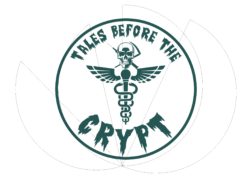There’s a million ways to die. There’s death from old age, sometimes referred to natural causes. There’s death from an illness. Death from trauma or accident. We definitely don’t have a choice in many of these cases.
I guess a better way to state this would be chose what we want when we do die, or how much intervention should we allow. I have made my choices as to what I want done if I cannot speak for myself when it comes to my time. This is in the form of my living will. Hopefully my family will honor my wishes. If they don’t, I have made it clear I will haunt them with rattling chains and howls during the night.
Be specific; CPR or no CPR. Artificial ventilation or not. Feeding tubes yes or no. Talk to someone who is in the business (such as myself) so that all of these medical interventions can be explained in detail that the layperson can understand. In many cases some of the medical interventions we use nowadays add up to torture of the human being during a crisis where there is no curative solution to someone’s illness or injury.
I remember in my earlier days as a Paramedic we thought we could save everybody. CPR, intubation and ventilation, a handful of injections and off to the hospital you go. In most cases we arrived to find the chapter already written. Nothing we were going to do could save this person. At least not as they were previously known. We would have to call in to Medical Authority to allow a peaceful end to a patient’s life if we felt there was no hope. This was a struggle, and sometimes still is. You see, the emergency room Physicians were no different than we were. We thought we could save everyone. Sadly, I now understand how many times daily I took part in a fruitless effort to try to cure a problem that was not curable. In the process we pummeled some of these folks with medical interventions leaving their bodies bruised, broken and battered.
I worked with a Medic once that tried very hard to allow for a peaceful passing at home. If he got the OK from the folks at the ER to call off our efforts at the residence he would oftentimes place the person back in their bed and make them presentable. At the time I thought this guy was kind of goofy to do this. I was wrong. I respect what he was doing and have adopted the same thought process during my time as a Practicing Physician Assistant.
Documents can vary from state to state. Most now have a document called a POLST. This is signed by a Physician, Physician Assistant or Nurse Practitioner and you are able to spell out very clearly what you want done to your body if you cannot chose for some reason. These are usually reserved for folks that consider they may have only 5 years or so remaining in their lifetime. They key is to have this readily accessible so that family and emergency personnel can see it and honor it. I had a Patient who recently died secondary to his exposure to COVID 19. We spoke at several of our visits at his home about his desires not to be put on a ventilator or have life support of any kind. Several times. He was a sick man, diabetes, heart disease, blindness, kidney disease. He would not have survived. He had a POLST. Sadly, even though he could have been left at his home with comfort care only, he was transported to the hospital, exposing many to the virus, put on oxygen and left to die alone. No family to visit, no friends to see him. We have to do better as a society.
The same stands true with the living will. Make sure your loved ones know where it is and understand your wishes. Otherwise it is not worth the paper its written on, not to mention the lawyers fees paid to prepare, if it is not honored at the time of your incapacitation.
So many ways to die, so little time to prepare.
